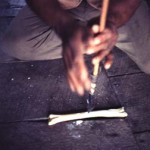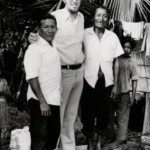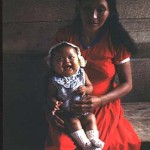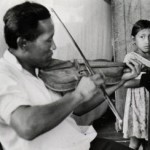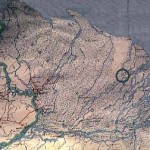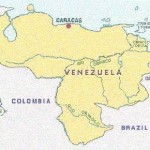 Gainesville: University Press of Florida. 1996. Includes CD.
Gainesville: University Press of Florida. 1996. Includes CD.
Cultural tragedy often accompanies the death of biological species in the South American rain forests. As fragile as the ecosystem is, however, the culture of the Warao Native Americans (inhabitants of the lower Orinoco River delta in Venezuela) continues to thrive. In this lively blend of musicology, anthropology, and environmental awareness, Dale Olsen shows that music holds together much of their existence.
For the Warao, who live in a rain forest habitat that remains relatively undisturbed by outside influences, nearly all aspects of life include music; it offers diversion, stability, protection, and power.
Olsen divides their musical genres into three categories: music for pleasure, such as dancing; music for utility, including lullabies; and music for theurgy–the largest group, which includes all songs pertaining to cosmology or calling upon supernatural forces. These may include shamanistic songs for curing illnesses or for causing illness and death, as well as songs for love, dreaming, making rain, healing wounds, or for cutting down sacred trees to build large canoes.
Olsen provides musical and textual transcriptions of many songs, which are translated, explained, analyzed, and included on an enclosed compact disk. He presents detailed information about Warao musical instruments, relating them to mythology, describing them (with numerous photographs), and placing them in their Circum-Caribbean context.
With delightful personal details, he also describes how he conducted his research–creating a musical-cultural rapport with the Warao as he learned their songs and taught them music from his own traditions, earning the nickname “Señor Jingle Bells” from the children. In time he came to know and record the voices of the most knowledgeable singers, most of whom were shamans, and ultimately he was invited to attend shamanistic curing sessions.
“Excellent musical insight and analysis. . . . The documented equation of this fascinating society is now considerably balanced with Olsen’s study of the art/mystic domain of the Warao.”–Steven Loza, University of California, Los Angeles
Winner of the 1997 Alan P. Merriam Prize for “Most Outstanding Book in Ethnomusicology” by the Society for Ethnomusicology
“An excellent balance of musical, cultural, historical, and mythological analysis. . . . A major contribution to the organology of Latin American Native American music-cultures.”–John M. Schechter, University of California, Santa Cruz
See below for images related to the book and selected audio examples from the CD. All images and audio examples are the property of Dr. Dale A. Olsen, who, with this statement, gives his unsolicited permission for their use for noncommercial and nonprofit educational purposes only.
SELECTED AUDIO EXAMPLES FROM CD:
Track 1: Lullaby sung by a mother
Track 2: Lullaby sung by a grandfather
Track 3: Two men playing muhusemoi deer bone flutes
Track 4: Nahanamu harvest festival music
Track 5: Song accompanied by ehuru drum
Track 6: Wisiratu shamanistic curing song with hebu mataru rattle
Track 7: Wisiratu shamanistic curing ritual
Track 8: Hoarotu inflicting song to destroy tape recorders
Track 9: Hoarotu curing ritual performed by three shamans


